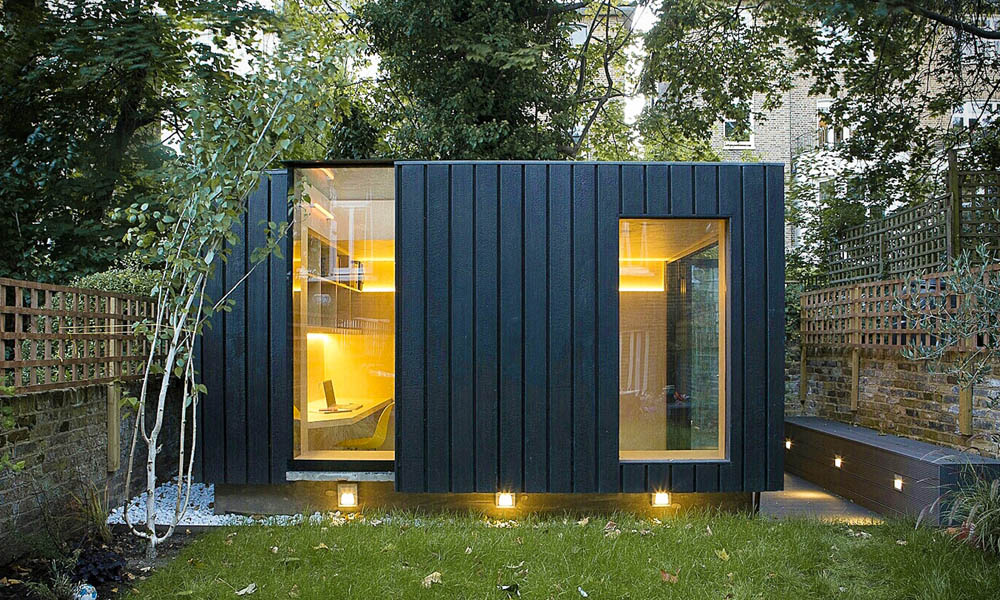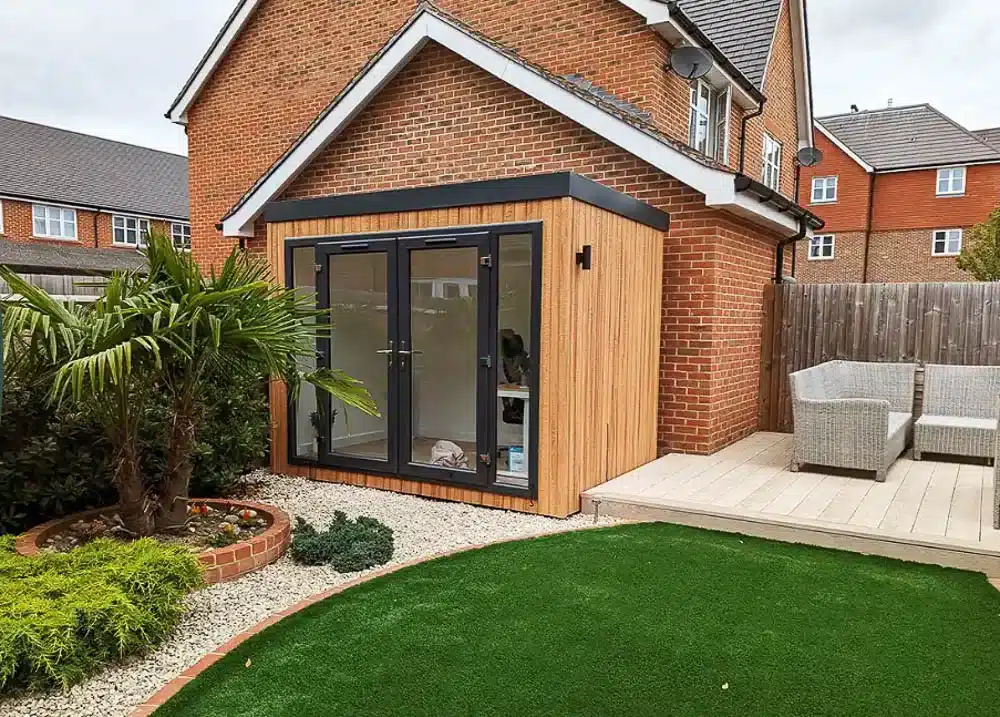Certain restrictions have been put in place to safeguard the appearance and character within conservation areas. This is the case for conservatories, gardens and garden rooms as well as outhouses. Planning permission is required in conservation zones. Here are some important considerations.
Planning permission is required for any building or extension that would fall under the rights of permitted development in a conservation zone. This could include sheds, garden rooms and outbuildings.
Size and Scale
Any structure of any size could require planning permission if deemed to affect the character of the conservation zone. In designated areas, there are greater limitations on the size and shape of any new structure or extensions.
Location of the Property:
It is more typical to require planning permission for extensions and buildings that are located at the front or the sides of a home. Planning permission might be needed for rear structures if it is visible from public areas or has an impact on the overall character.
Materials and Design
The selection of the material and design is vital when it comes to conservation zones. The selection of materials for any new building or extension needs to be in harmony with the historical or architectural importance of the location. Planning permission is required to ensure these criteria are met.
Demolition:
In conservation areas, it is necessary to obtain planning approval for the demolishment of any existing building or part of a building, such as outbuildings or boundary walls. This is done to ensure that any changes don't alter the appearance of the area.
Height Restrictions
Height restrictions are more strict in conservation zones. Planning approval is necessary for every structure which exceeds 2.5 meters (especially if it's within 2 meters of a boundary).
The impact on surrounding areas
Planning permission may be required if a proposed building extension, addition or change to the appearance or setting of the conservation zone could negatively impact its appearance and surroundings.
The Building is Used to:
If an outbuilding or garden exceeds the dimensions however, it might still require planning permission because of its intended purpose (e.g. as an office, studio or a room that is habitable).
The following are extensions and modifications:
The majority of extensions that alter the style of the building or surpass certain volume or size limits will require approval for planning. This applies to conservatories as well as any other significant alterations.
Curtilage Structures:
Constructions that are located within the curtilage an listed building within a conservation area must always be approved for planning. This includes expansions, outbuildings or changes.
The Trees are protected
Trees in conservation zones are typically protected. If your proposed project will affect trees, you may need to seek additional permits, including the tree work permit and a planning permit.
Local Authority Guidelines
The local authority for planning may set specific guidelines or restrictions in every conservation zone. They could include precise guidelines regarding what is permissible and what isn't and adapted to the specific nature of the region.
Planning permission in a Conservation Area is based on a thorough assessment of how the proposed gardenroom outhouse, conservatory, or garden office would have an impact on the architectural or historic characteristics of the conservation zone. To ensure that the project is in compliance with all applicable regulations, it is vital to speak with local authorities early in the process of designing. See the top mini garden office pod for website info including garden office, myouthouse, copyright garden room, small garden office, what size garden room without planning permission, garden room planning permission, what is a garden room, garden rooms brookmans park, outhouse garden, insulated garden rooms and more.

In Terms Of Listed Buildings, What Kind Of Planning Permit Are You Required To Get For Garden Rooms Etc?
Building gardenrooms outhouses, conservatories, and garden rooms as well as extensions or gardens in the areas of listed buildings needs special considerations. More stringent regulations are also in place. The following are key considerations when planning these projects.
Alongside the need for the planning approval, any alteration or expansion within the limits of a building that is historic is subject to listed-building approval. Changes can affect the special nature of the listed building.
The impact on the character of historical characters:
Planning permission is required for any extension or new structure that could alter the historic style or appearance of a listed building or setting. This includes outbuildings and gardens.
Materials and Design:
The new structure and materials should be in line with the architectural and historical importance of the listed building. It could be required to utilize traditional materials and custom designs, which will require permission for the design.
Proximity to the listed building:
New structures built close to historic sites are scrutinized to determine their effect on the setting and appearance. To ensure that they do not interfere with the historic character of the structure it is necessary to obtain planning permission.
Size and Scale
The size and scale of the proposed conservatory, garden room, or extension should be appropriate and sympathetic to the existing building. The bigger structures will require more thorough assessment and planning approval.
Location on the Property
The location of the proposed structure (whether in front, side, or back of the listed building) could affect the need to obtain planning permission. Places that are visible from the street or interfere with the views of a building usually come under more scrutiny.
Internal structural changes:
If the structure being built is detached from the old building and any modifications made to it (such as the addition of new access points) will require planning and listed building permission.
Conservation Areas Overlap
There are additional restrictions if the building is both listed and in an area of conservation. Planning permission is needed to ensure that both conservation area and listed building rules are adhered to.
The use of the building
The construction of an outbuilding or garden room can impact the need to apply for a planning permit. Applications that require a significant shift, like commercial or residential use, are scrutinized more closely.
Structural Impact:
If a construction could compromise the structural integrity, it would need permission for planning.
Local Authority Guidelines
Local authorities often offer specific guidelines for listed buildings that outline the different types of construction as well as modifications that can be permitted. Planning permission ensures that the guidelines are followed.
Professional Assessments
Conservation experts often need to conduct detailed assessments of proposed work on listed structures. These assessments help determine the appropriateness of the proposed changes, and help support the planning permission application.
As a summary, it is almost always necessary to obtain planning permission and a listed construction consent when constructing extensions and conservatories, garden rooms, or gardens, as well outhouses or conservatories that are attached to listed structures. Contact your local planning authority and heritage experts at the beginning of the process of planning to ensure compliance with the relevant regulations. This can also protect the historic and architectural integrity of the structure. Check out the top rated grey garden rooms for more info including copyright garden room, outhouse, how to lay decking on soil, myouthouse, luxury outhouse, garden rooms brookmans park, garden room permitted development, outhouse for garden, garden room planning permission, garden room and more.

What Are The Limitations On Where To Place Them For Garden Rooms, Etc?
Planning permission is often required for conservatories, garden rooms and outhouses. Here are the most important criteria for locations: proximity to boundaries:
A building that is less than 2 meters of the property limit must not exceed a maximum height of 2.5 meters. If the building's height exceeds this limit then planning permission is needed.
The front of the property
Constructions that are built in front of the main elevation of the house (the front facing side) generally require planning permission as the permitted development rights do not typically allow for forward extensions or buildings.
The Property's Side:
If the side extension extends further than the wall, it will often require permission to plan.
Back of the Property
Height and size restrictions apply to garden rooms and rear extensions that are located behind the house. If they exceed the permitted limit for development, then planning permission will need to be obtained.
Designated Areas
In National Parks, World Heritage Sites and Areas of Outstanding Natural Beauty there are stricter rules. Every new building may require planning approval, no matter its size.
List of Buildings
The listed buildings are subject to strict rules. No matter where the structure is located on your property, you'll need to get permission for planning as well as approved building permits to make any changes or extensions.
Green Belt Land:
In order to maintain open spaces, it is extremely difficult to build on greenbelts. A special permit is typically required for new construction, or significant modifications.
Zones of risk for flooding:
If the property is located in a flood risk zone there are additional rules to ensure that the building isn't a source of increased flooding risk. Planning permission, and perhaps an assessment of the risk of flooding could be required.
Urban vs. Rural Settings
Rural and urban settings are typically governed in a different manner. Rural homes are more flexible on the dimensions and placement of outbuildings. This varies greatly.
Highways and Public Rights of Way:
Planning permission might be required if the structure is near highways, public rights-of-way, or roads to ensure it doesn't interfere with safety, views or hinder access.
Shared Ownership and Leasehold Land
Additional permissions might be required from the managing body or the freeholder in the case of leasehold properties or are part of shared ownership schemes. Planning permission can still be granted based on local laws.
The Structures Adjacent:
The proposed structure could require planning approval to avoid adverse impacts on the neighboring properties or land.
It is always recommended to speak with your local planning authority to receive specific guidance specific to your specific location and specific circumstances. Local laws can influence laws, which is why it's essential to be sure that you are in compliance with all restrictions. View the top rated what size garden building without planning for website advice including garden room, garden rooms in St Albans, garden office electrics, garden room vs extension, Tring garden rooms, garden out house, outhouses, outhouse garden rooms, copyright outhouse, best electric heater for cabin and more.
